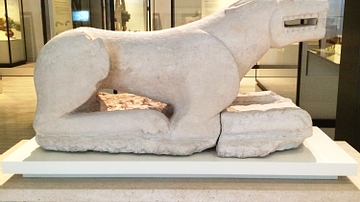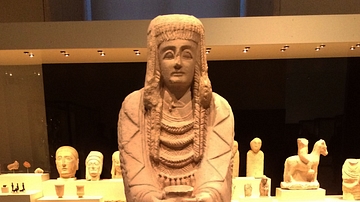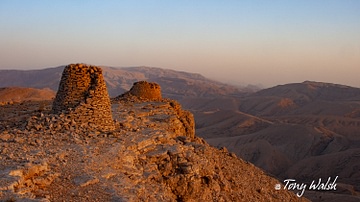Search
Search Results

Image
Lioness of Baena
The "Lioness of Baena" was made of limestone in the 5th century BCE by ancient Iberian people. It was found at Minguillar Hill (Baena, Córdoba), Spain. In a menacing pose with open jaws, this lioness may have been a protective element on...

Image
Great Lady Offerant
This almost life-sized female sculpture is carved in the round in an offerant pose. It dates from the 3rd century BCE, and it is ancient Iberian in origin. It was found at the Shrine of Cerro de los Santos (Montealegre del Castillo, Albacete...

Definition
Rashidun Caliphate
The first four caliphs of the Islamic empire – Abu Bakr, Umar, Uthman, and Ali are referred to as Rashidun (rightly guided) Caliphs (632-661 CE) by mainstream Sunni Muslims. Their tenure started with the death of Prophet Muhammad in 632 CE...

Definition
Crusades
The Crusades were a series of military campaigns organised by popes and Christian western powers to take Jerusalem and the Holy Land back from Muslim control and then defend those gains. There were eight major official crusades between 1095...

Definition
Kukulcan - The Feathered-Serpent God of Mesoamerica
Kukulcan (pron. Koo-kool-kan) is the name of a feathered serpent god in the mythology and religion of Mesoamerica, in particular, the Yucatec Maya. He is also identified as the feathered serpent god Quetzalcóatl by the Toltecs and Aztecs...

Article
European Discovery & Conquest of the Spice Islands
Clove, nutmeg, and mace are native to only a handful of tiny islands in the middle of the vast Indonesian archipelago – cloves on five Maluku Islands (the Moluccas) about 1250 km (778 mi) west of New Guinea, and nutmeg on the ten Banda Islands...

Video
Numantia - Live Action Trailer
Numantia is a TBS game based on the true historical events that occurred in the Iberian Peninsula in the 154 BCE. Play through two different campaigns as Numantia, the most important Celtiberian city in Hispania or as the Republic of...

Article
The Extent of the Roman Empire
Time has seen the rise and fall of a number of great empires - the Babylonian, the Assyrian, the Egyptian, and lastly, the Persian. Regardless of the size or skill of their army or the capabilities of their leaders, all of these empires fell...

Interview
Interview: Buddhism in Korea
In this interview, James Blake Wiener, Co-Founder and Communications Director at Ancient History Encyclopedia (AHE), speaks to Emeritus Professor James H. Grayson, Professor of Korean Studies at the University of Sheffield, about the historical...

Interview
Oman: The Land of Frankincense - Tony Walsh
While Oman is perhaps the most mysterious corner of the Arabian peninsula to Westerners, the country retains a strong sense of identity, a pride in its ancient past, and unique surprises in the domain of cultural heritage. In this exclusive...